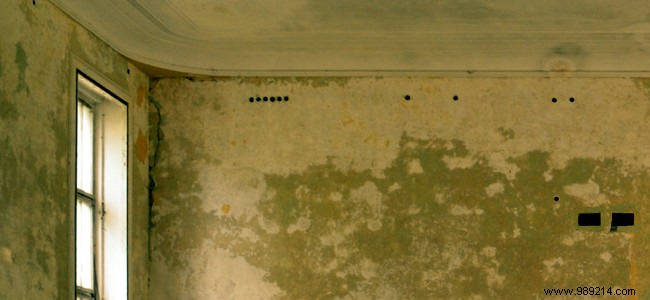Damp problems are not uncommon in homes and are a real pain! Sometimes difficult to identify, it is often even more complex to remedy them definitively. However, there are solutions! Here are some tips to help.

If nearly one in five households is affected by a humidity problem in France, identifying the signs is not always easy. This indeed manifests itself in several ways, sometimes in one way, sometimes through several signs.
Anyway, if you see at least one of the following symptoms, your home is affected by a humidity problem:
Before you jump into any hide-and-seek, look for the cause of the dampness. Treating the surface will be useless if you do not know where it comes from. Imagine that you have to treat an illness; you need to find the cause to find the right remedy and not just swallow drugs unnecessarily. It is essential to find the source of the problem to solve it, you will avoid a significant waste of time and money by proceeding logically!
If in doubt, call a professional. He will be able to identify the cause of the humidity and suggest solutions or give you advice on how to remedy it.
We have already said it, but it is essential to remember that before embellishing your walls to hide traces of humidity, it is imperative to treat the problem at its source.
Depending on the origin of the humidity, several works can be carried out:
Has the origin of the damp been properly identified and is it properly repaired? Perfect ! You now have to… wait again! Wait until your walls, ceilings and/or floors are completely dry before tackling your decoration work. This step is often very painful, but it is essential.
Indeed, although the problem has been repaired at its source, the moisture is still present in the surfaces. The walls, floors and ceilings are still full of water stored for several days, weeks, months or even years! If you already cover your surfaces, the same problems will reoccur (peeling wallpaper, blistered paint, warped paneling, etc.). Likewise, if you immediately apply an insulating and anti-humidity coating, the stored water will seek another path and will spread to the heart of your surfaces to come out further.
So before decorating your home, wait several days, or even several weeks depending on the damage, so that the walls, floors or ceilings are completely dry. You can then start your work:
If the source of the humidity has been identified and repaired, and if you have given your walls time to dry properly, your coverings should no longer suffer from the hazards associated with this problem.
This work has a cost, which obviously varies according to the service. For the installation of a CMV, count between 150 and 1500 euros depending on the model chosen and any work to be carried out. To treat a problem of capillary rise, the bill will be between 30 and 60 euros per linear meter.
To dry a damp wall, you can buy your own drying plant for a budget of 500 to 2000 euros, or carry out sanitation work by injection for 50 euros for 5 liters. A drainage will cost you up to 3000 euros depending on the surface to be treated. If you hire a professional, the price can vary from 2000 to 6000 euros, supplies included.
Finally, add to that the cost of water-repellent treatments, around 10 euros per litre, and embellishment and decoration work.